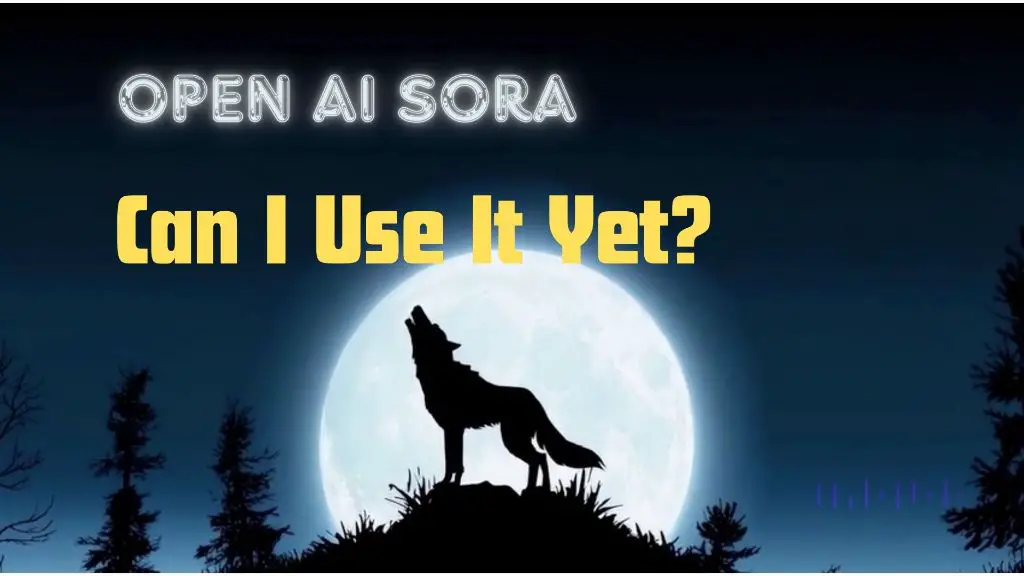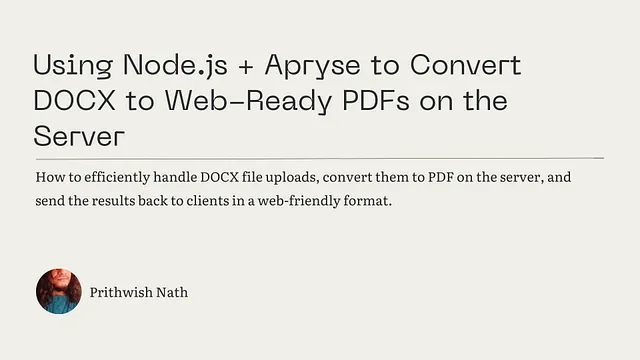
Exciting news in the AI field! OpenAI recently unveiled Sora, a text-to-video AI generator. With just a simple prompt, it can swiftly create videos up to 1 minute long, all in a single continuous shot! Compared to other AI video tools like Pika and RunwayML, which are still breaking through the 4-second barrier, OpenAI has achieved an epic milestone.
At this point, you might be eager to ask: can I use OpenAI Sora yet? And if so, how?
The answer, for now, is a cautious not yet. While Sora's debut has sparked widespread excitement, its current accessibility is tightly controlled. OpenAI has granted limited access to "red teams" – security experts tasked with identifying potential vulnerabilities in the technology, or personally invited by them.
This cautious approach reflects the immense power and potential misuse of such technology. Deepfakes, already a concern, could become even more convincing with tools like Sora, raising complex ethical and societal questions.
However, limited access doesn't necessarily mean a long wait. Alternative text-to-video AI options, like RunwayML, Synthesia and Pika Labs, offer free tiers or public access with varying capabilities. While they might not match Sora's current prowess, they provide a glimpse into the possibilities and limitations of this technology.
So, when can we expect wider access to Sora? OpenAI hasn't provided a concrete timeline, but their actions offer clues. The initial release for research and creative exploration suggests a commitment to responsible development and addressing potential risks. Furthermore, the rapid advancements in AI suggest public access could come sooner than anticipated, perhaps with safeguards and ethical guidelines in place.
But before we dive headfirst into a world of AI-generated videos, we need to consider the broader implications. How will this technology impact traditional filmmaking and animation industries? Will it democratize video creation or exacerbate existing inequalities? These questions demand thoughtful discussion and collaboration between technologists, policymakers, and the public.
The ethical considerations go beyond potential misuse. What about the creative process itself? Will relying on AI stifle human originality and storytelling? And how will we ensure that AI-generated content is transparently labeled, especially when it blurs the lines between reality and fiction?
OpenAI Sora undoubtedly represents a significant leap forward in text-to-video technology. Its capabilities are impressive, but the real challenge lies in harnessing its power responsibly. We must navigate this path with caution, fostering collaboration and critical thinking to ensure that AI tools like Sora enhance our world, not harm it.
@openai Introducing Sora, our first AI model that creates videos from text captions. This video was generated from the following prompt: “Beautiful, snowy Tokyo city is bustling. The camera moves through the bustling city street, following several people enjoying the beautiful snowy weather and shopping at nearby stalls. Gorgeous sakura petals are flying through the wind along with snowflakes”What would you like to see Sora make next? Let us know in the comments. #madewithSora #Sora #OpenAI ♬ original sound - OpenAI
OpenAI Sora Demo Video
The video was generated from this prompt: Beautiful, snowy Tokyo city is bustling. The camera moves through the bustling city street, following several people enjoying the beautiful snowy weather and shopping at nearby stalls. Gorgeous sakura petals are flying through the wind along with snowflakes.
Beyond the Alternatives: Peeling Back the Layers of Sora's Power
While alternatives like Pika and RunwayML offer a taste of text-to-video, Sora appears to be in a league of its own. It can generate longer, more detailed videos with smoother transitions and higher fidelity to the described scene.
Imagine effortlessly conjuring landscapes untouched by human hand, recreating historical events with unparalleled realism, or crafting animated narratives with breathtaking fluidity. These are just glimpses of the possibilities that Sora holds.
But power comes with responsibility. Unlike simpler alternatives, Sora's potential for deepfakes and the manipulation of reality is substantial. Imagine convincing news footage fabricated from scratch, political campaigns weaponizing AI-generated narratives, or even personal attacks disguised as authentic videos.
These scenarios, chilling as they may be, highlight the urgent need for robust ethical frameworks and regulations to govern this technology.
A Ripple Effect: Reimagining Industries and Reshaping Society
OpenAI Sora's impact, however, goes beyond potential misuses. It has the potential to revolutionize several industries:
- Filmmaking: The ability to rapidly prototype scenes, create virtual backdrops, or animate complex sequences could democratize filmmaking and offer cost-effective solutions for independent creators. However, questions arise about preserving the craft and originality in a world flooded with AI-generated visuals.
- Animation: Animators could benefit from faster workflows and the ability to explore new artistic styles effortlessly. Yet, this raises concerns about job displacement and the potential homogenization of animated content.
- Journalism: While AI-generated visuals could enhance storytelling, ensuring transparency and ethical use becomes paramount to maintain trust in news media.
Beyond these specific industries, the widespread adoption of Sora could impact education, communication, and entertainment in ways we can only begin to imagine.
But amidst the excitement, we must remember that technological progress doesn't occur in a vacuum. The ethical dilemmas, potential job displacements, and societal shifts need to be addressed proactively, through open dialogue, collaboration, and responsible development practices.
Exploring Options Beyond Sora: A Look at Other Text-to-Video AI Tools
As you know, Sora is not yet available to the public. However, if you are still interested in trying text-to-AI video, you can try the following several alternative tools. Although they are not as powerful as Sora, they offer different functions and accessibility to meet different needs and budgets.
Let's explore some notable options:
Free or Public Access:
- RunwayML: This platform offers a limited free tier with text-to-video capabilities. Ideal for experimenting and exploring creative possibilities, it allows generating shorter clips with basic features. Keep in mind that full functionalities require paid subscriptions.
- Synthesia: Primarily focused on creating videos with real-looking avatars, Synthesia offers a freemium plan with limited video lengths and resolutions. This option shines for marketing or communication purposes, but might not be ideal for complex animations or diverse styles.
- Lumen5: This AI-powered video creation platform incorporates text-to-video functionalities within its broader offering. Focusing on short, social media-friendly videos, it provides a free tier with limited features. For more advanced options and longer videos, paid plans are available.
- Pika Labs: This platform offers a unique combination of text-to-video, image-to-video and video-to-video functionality. It is currently in beta and offers both free and paid options with different capabilities. Although its text-to-video capabilities may not yet match Sora's reported capabilities, it excels in its combination of functionality and creative freedom.
Paid Options:
- Colossyan: Offering various AI tools, including text-to-video with customizable avatars and voices, Colossyan caters to businesses and professionals with paid subscription plans. It boasts advanced features like multiple character scenes and detailed customizations, but comes at a cost.
- Pictory: Specifically designed for animated explainer videos, Pictory translates text descriptions into engaging visuals with voiceovers and music. It offers various paid plans depending on video length, resolution, and desired functionalities.
Comparing Capabilities and Limitations:
Remember, each option has its strengths and weaknesses compared to Sora:
- Accessibility: While Sora is currently unavailable to the public, some of the mentioned alternatives offer free tiers or wider access.
- Functionality: Options like Colossyan and Pictory might lack Sora's reported advanced capabilities, but excel in specific areas like avatar customization or explainer video creation.
- Focus: Some tools like Synthesia cater primarily to specific use cases like marketing videos, while others offer broader creative freedom.
Conclusion: Shaping the Future, Responsibly
Sora might not be readily available today, but its emergence serves as a wake-up call. We stand at a pivotal point, where the potential of AI-powered creativity intersects with ethical concerns and societal uncertainties. We cannot simply wait for answers. Instead, we must actively engage in shaping the future of this technology:
- Demand transparency and accountability: Advocate for clear labeling of AI-generated content and hold developers accountable for ethical practices.
- Support responsible development: Encourage collaborations between technologists, policymakers, and the public to establish ethical guidelines and regulations.
- Explore the possibilities thoughtfully: Engage in open discussions about the impacts of AI on various industries and society as a whole.
The key lies in embracing the potential of Sora, not with blind optimism, but with a cautious and responsible approach. By fostering constructive dialogue, proactively addressing risks, and actively shaping its development, we can ensure that OpenAI Sora becomes a tool for good, one that empowers creativity, enhances communication, and ultimately benefits humanity.
@openai Introducing Sora, our first AI model that creates videos from text captions. This video was generated from the following prompt: “a drone camera circles around a beautiful historic church built on a rocky outcropping along the Amalfi Coast, the view showcases historic and magnificent architectural details and tiered pathways and patios, waves are seen crashing against the rocks below as the view overlooks the horizon of the coastal waters and hilly landscapes of the Amalfi Coast Italy, several distant people are seen walking and enjoying vistas on patios of the dramatic ocean views, the warm glow of the afternoon sun creates a magical and romantic feeling to the scene, the view is stunning captured with beautiful photography.”What would you like to see Sora make next? Let us know in the comments. #madewithSora #Sora #OpenAI ♬ original sound - OpenAI
OpenAI Sora Demo Video
The video was generated from this prompt: a drone camera circles around a beautiful historic church built on a rocky outcropping along the Amalfi Coast, the view showcases historic and magnificent architectural details and tiered pathways and patios, waves are seen crashing against the rocks below as the view overlooks the horizon of the coastal waters and hilly landscapes of the Amalfi Coast Italy, several distant people are seen walking and enjoying vistas on patios of the dramatic ocean views, the warm glow of the afternoon sun creates a magical and romantic feeling to the scene, the view is stunning captured with beautiful photography.
